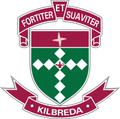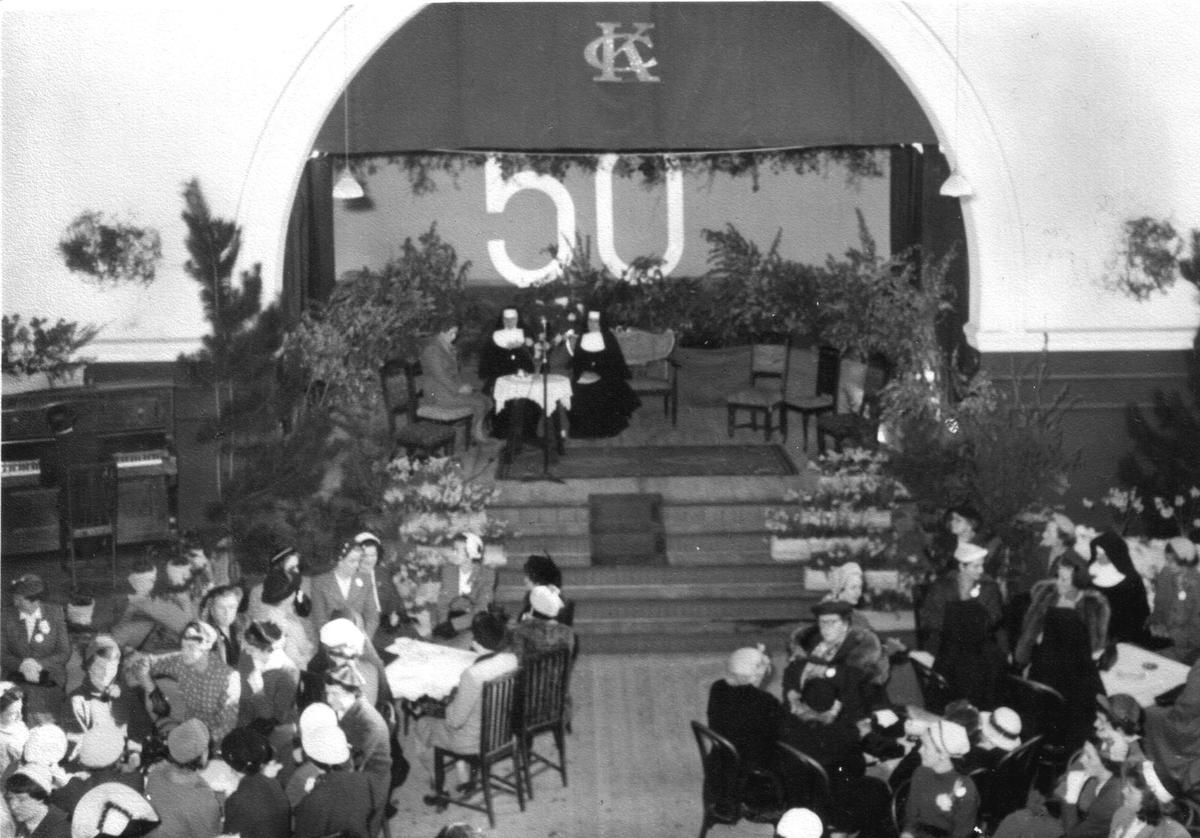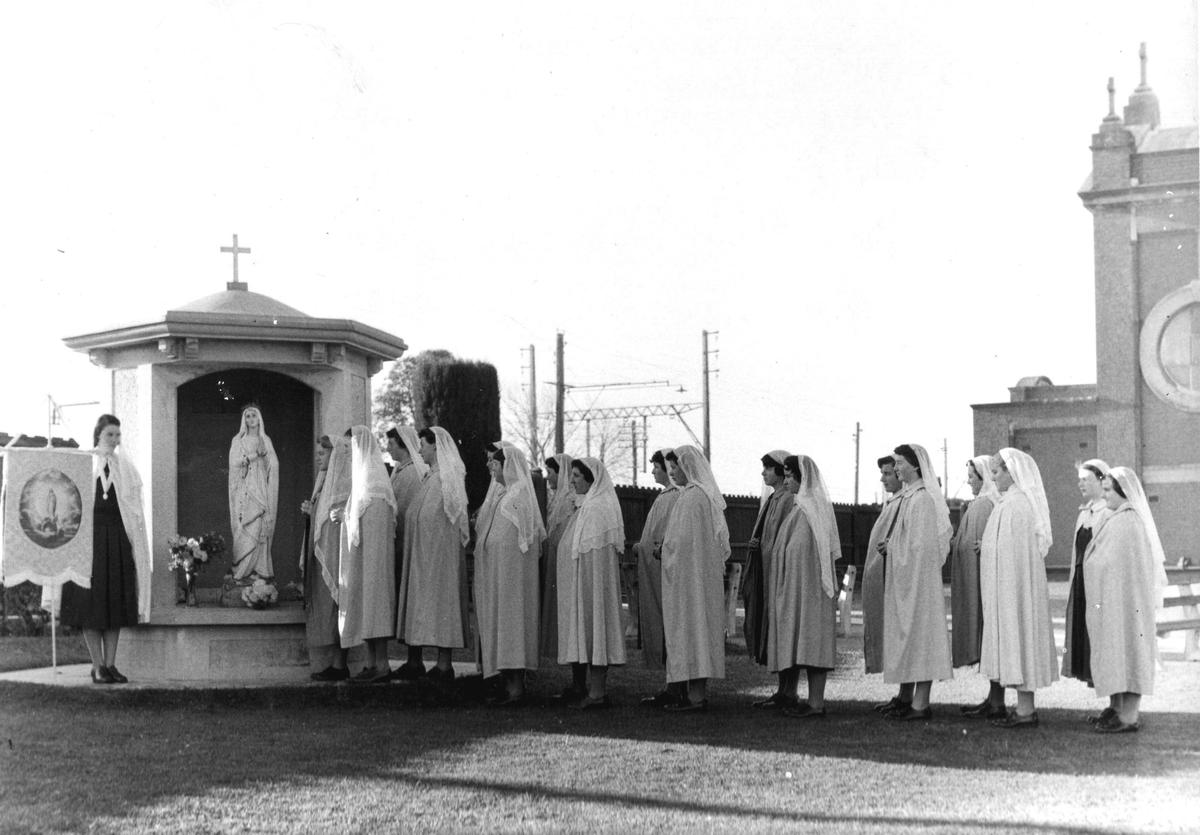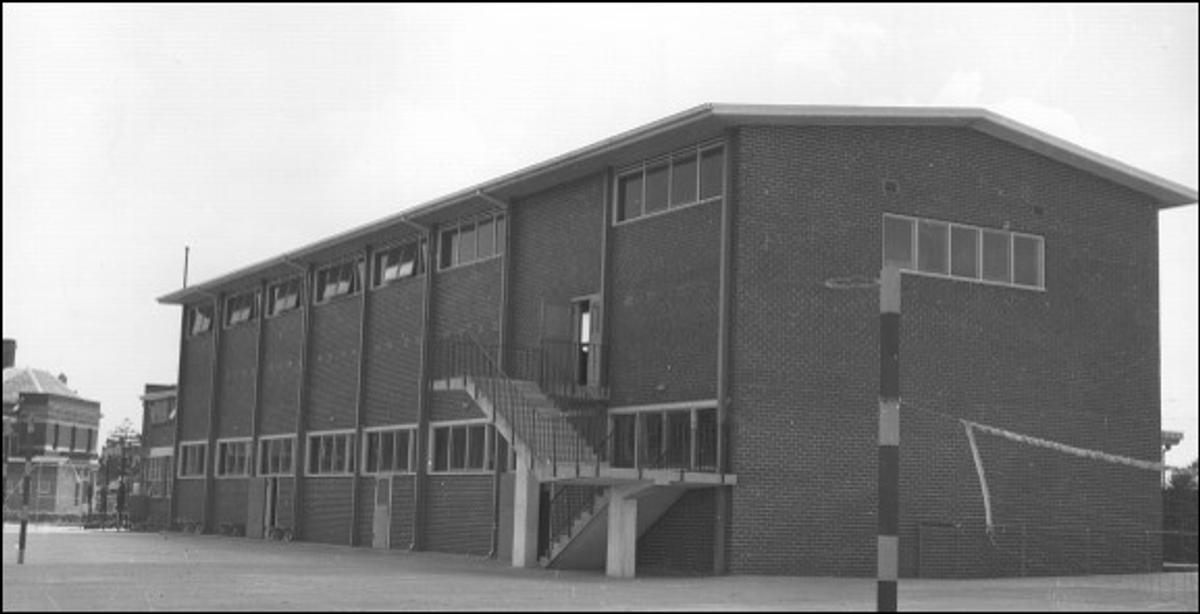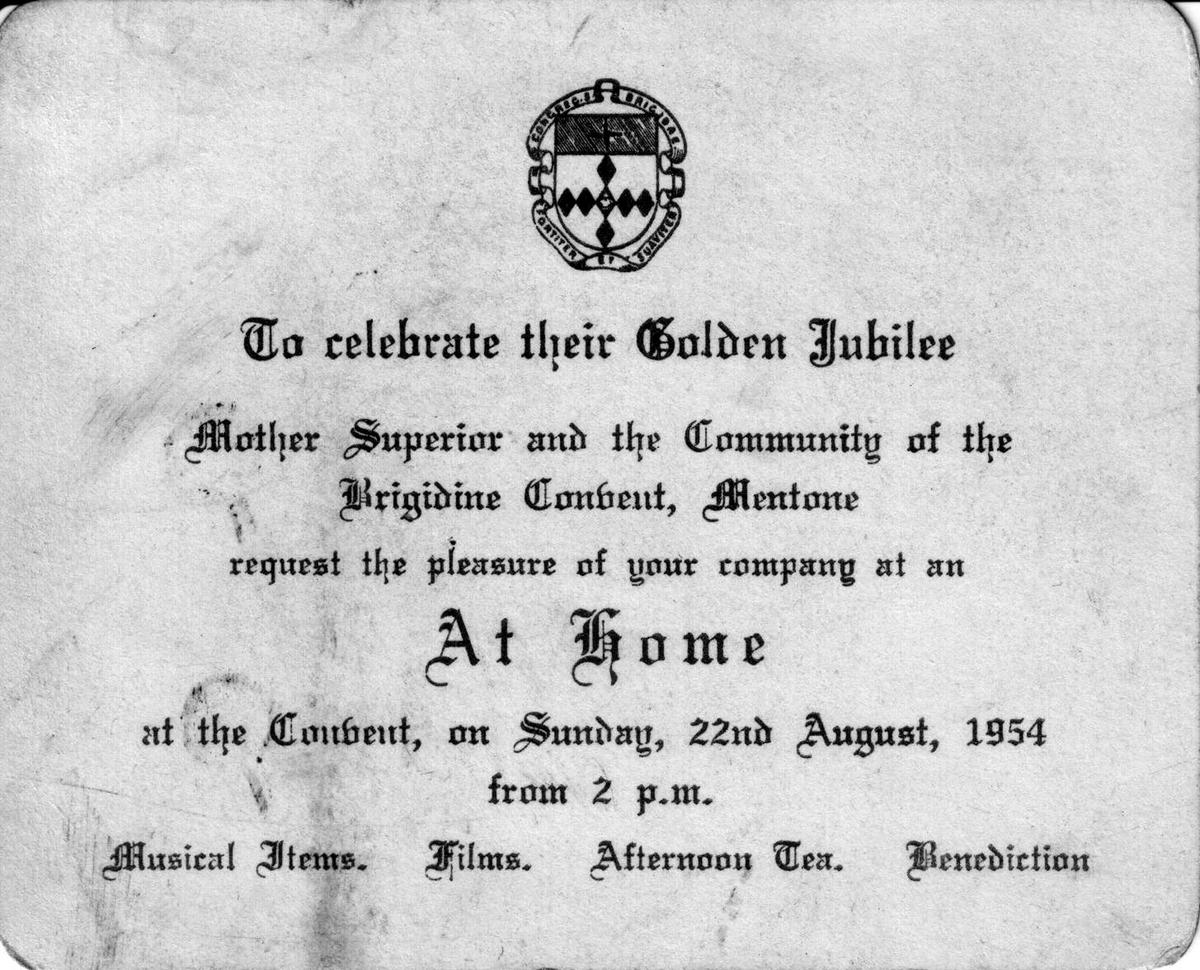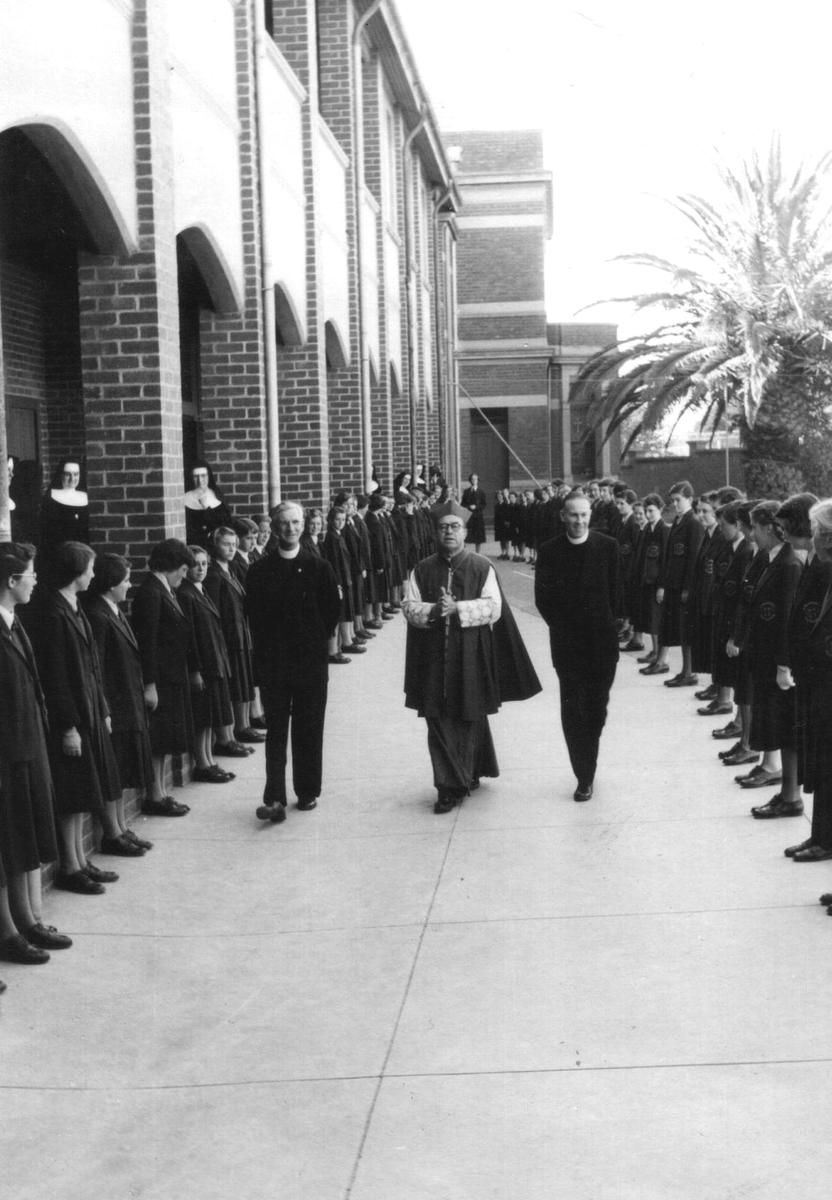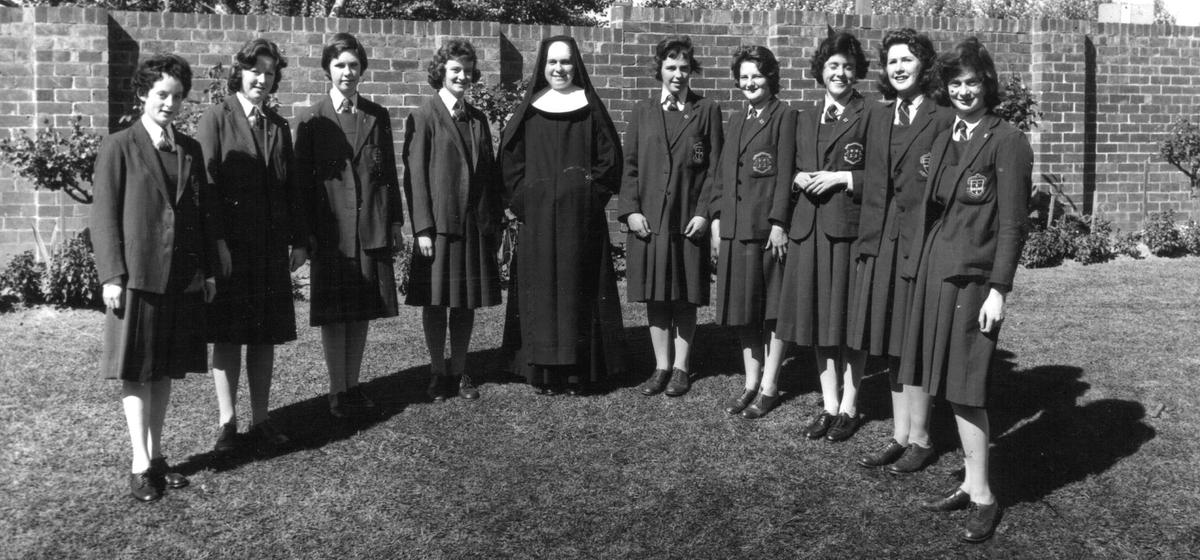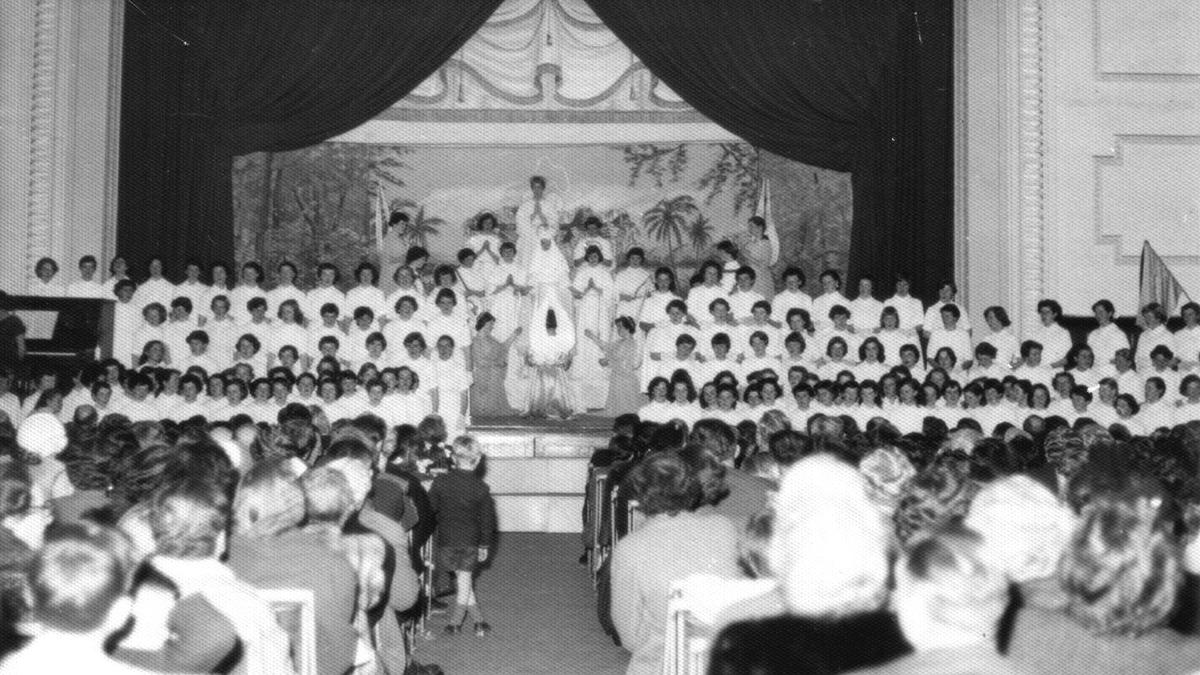From the Archives
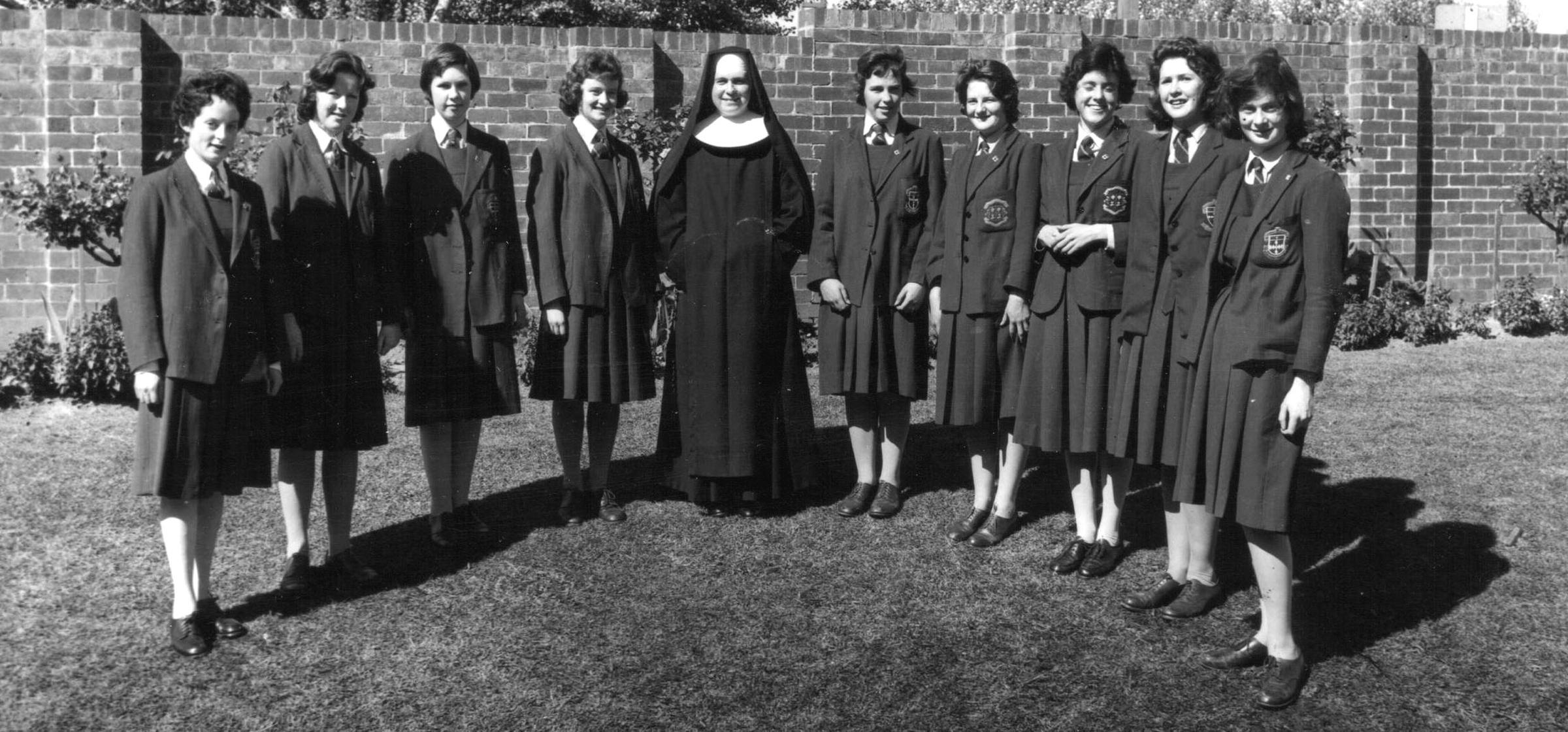
The buoyant enthusiasm of the post-war period saw growth and involvement in many areas of society. At Kilbreda, students were encouraged to contribute to this vigour through groups such as the YCS (Young Christian Students), Eisteddfods and public speaking competitions. Further building projects, including St Anne’s and the St Margaret Mary wing, were required to accommodate the burgeoning numbers of “baby boomers”.
July 1950 saw the passing of Mother Liguori Quinn on July 19th. “She was a Foundation Member of the Convent, and her work in the schools had its sure reward of forty-six years devoted to God’s Little Ones”. 1 In 1951, the Pilgrim Statue of Fatima came to Mentone and to Kilbreda on March 1. “Father Demoutier O.M.I. assisted by Donna Teresa, erected the Statue on the shoulders of four Children of Mary who headed the Honour Guard in the street parallel with the Convent. The Nuns took over the Statue at the Convent Entrance whence the Procession led by Fathers Murphy and Demoutier approached the Grotto, where the Statue was placed.” 2
By November 1952, the construction of new classrooms, St Anne’s wing (now Rooms 24-26 and below), was nearly complete, to the point that most of the classes had been occupied. The Advocate reported that, “The New Wing, dedicated to St Anne, is a substantial and excellently equipped double-storied brick structure. Fr O’Hanlon said, ‘the Brigidine Nuns had erected a building of which they were proud. The pupils were a credit to the College and its Past Pupils were proud of it’. Mr. G. White MLA said that ‘in giving children a religious training, Kilbreda and schools like it, were giving society the one thing that would save it from destruction’”.3 The building, which cost about £40,000 to build and furnish, was opened and blessed by Archbishop Simonds, Coadjutor Archbishop on March 15 1953. Designed by A. A. Fritsch, who had also designed the neighbouring Colonnade building nearly thirty years before, it was built in matching red brick, which, unlike the modern trend, made it fit in seamlessly with its surroundings.
“Notwithstanding the six additional class rooms, one of the former temporary rooms had to be re-occupied and a Secular Teacher engaged to supply the need on staff. Numbers continued to grow though many applications were deferred and Non-Catholics have not been admitted over many years”. 4 It was not until 1954, that a Staff Room was provided for the ‘Secular Mistresses’, of whom there were seven full-time, five part-time as well as five ‘visiting’ teachers. There were 241 Secondary students and 315 in the Primary school. A special white frock was available from Buckley and Nunn, to be worn on special occasions such as the Golden Jubilee Celebrations in August that year, as well as end of year functions. “The Special Golden Jubilee Celebrations began on August 10th, when his Grace, Most Rev Dr Mannix presided at Solemn High Mass in St Patrick’s Church. Fr O’Hanlon P.P. reviewed the work of the Brigidine Nuns in Mentone Parish over fifty years and the conspicuous results of their efforts. He stressed the need for Religious Vocations. The College Choir sang the ‘Missa Canonica’. After the morning’s function, forty priests were entertained to dinner in the Convent dining-hall”.5 Various social events took place including a combined Display and Pageant by students from schools in Mentone, Mordialloc and Cheltenham. One was an impressive dramatic formation of the Brigidine Badge by students. A Jubilee Concert was given by the Senior students on August 18, which included the play, ‘The White Dove of Erin’, depicting scenes from the life of St Brigid. A reunion of Past Pupils was held on August 28 and many, including Eileen Dempsey who was present on the very first day, came back to celebrate. Their visit was not without occasion, as they presented the Sisters with a “beautiful domed bronze tabernacle, candelabra, an electric bracket-clock for the Colonnade and a slide projector for views and also film-strip equipment”. 6
Fr O’Hanlon’s call for Religious Vocations did not go unheeded, as a large number of Kilbreda girls from the 50s entered including Marie O’Kelly, Margaret Cassidy, Maria Guinan, Reba Woodwiss, Angela Ryan, Pauline O’Callaghan, Maureen Titford, Mary Broderick, Delys Baldwin, Deirdre Malone, Claire Joyce, Maree Holt, Loreto Brennan, Bernardine Kelly, Gail and Theresa Ryan. “Two visits which gave particular pleasure to the Community and pupils of 1954, were that of Leone Guinan on her way to enter our Novitiate and that of Mary Myers just completed her Novitiate in November”. 7
1955 saw the Junior Debating Team winning the Speech Craft Festival, while the Seniors were second in their division. The talented Choir under the direction of Mother Andrew McDonald, won Champion Choir at the Dandenong Eisteddfod, the first of three consecutive trophies. Kilbreda’s choir had been well established and had performed creditably and was consequently chosen to represent Catholic Colleges at the Choral Festival in the Exhibition Building to celebration Queen Elizabeth’s coronation in 1953.
Mother Barbara, later Principal, joined the staff in 1956. The current Music Centre was built in 1956 and included a lunch room upstairs where the band room now is. Further additions were planned in 1957, culminating in the building of St Margaret Mary’s wing, which was opened by Archbishop Simonds in November 1959. This building included four classrooms on the ground floor and a school hall above. The former wooden fence on Como Parade was replaced by the more familiar brick fence, which remained until about 1998.
Kilbreda College Captain in 1955 was Reba Woodwiss, who had been House Captain of Padua the previous year. When told by Mother Margaret Mary that she was to be Kilbreda Captain, Reba misunderstood and was upset, as she believed the Principal was talking about Kilbreda House. Reba’s mother later pointed out that Mother Marg may have been wanting her to be school Captain and sent Reba back to find out! At Kilbreda, Reba was involved in the YCS under the leadership of Canisius Larkin and maintained her involvement later, as Sr Goretti when she was elected to the state from 1967-71 and was their representative on the National Executive. On leaving Kilbreda, Reba entered the Convent in 1957 and returned to Kilbreda to teach as Sr Goretti in 1960, remaining until the early 1970s. From 1974, Reba was the last Principal of Kilbride in Albert Park before it closed down in 1978. Reba was the last Brigidine Principal of Clonard and then spent 23 years as Deputy Principal of Highview Ecumenical College, Maryborough. In 2007, Reba returned to Clonard to be involved in the pastoral care of students as Home/School liaison person.
In more recent times, Reba’s artistic talents have come to the fore, expressed in various ways. Here at Kilbreda, Reba designed the beautiful leadlight panels in St Brigid’s Chapel for our Centenary Celebrations. When the new St Brigid’s Chapel opened at Clonard in 2016, Reba once again designed stained glass windows depicting the Clonard story. Reba’s flame design is known to us all as the basis of the Kildare Ministries logo, digitalised by Clare Locke in 2013. Reba has continued her involvement at Kilbreda as a regular speaker to the Year 12 students at the beginning of each school year.
1, 2, 5-7 Kilbreda Convent Annals 1950-9
3-4 Advocate Melbourne 1953
Damian Smith
Archives
